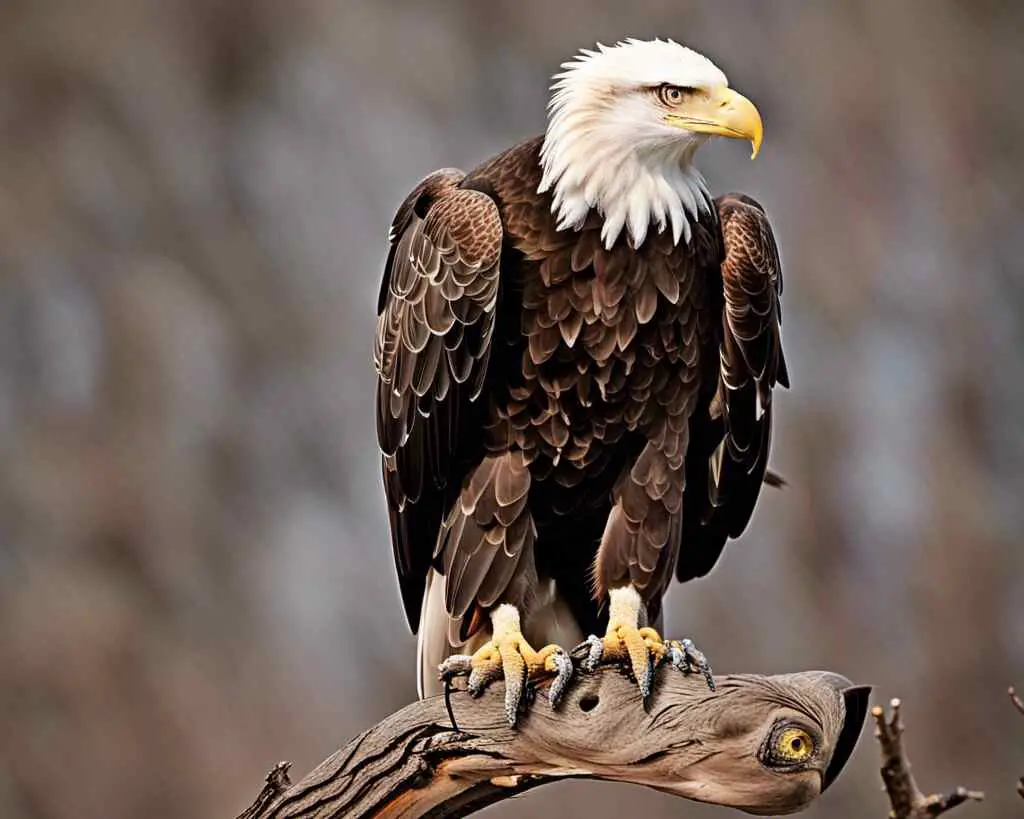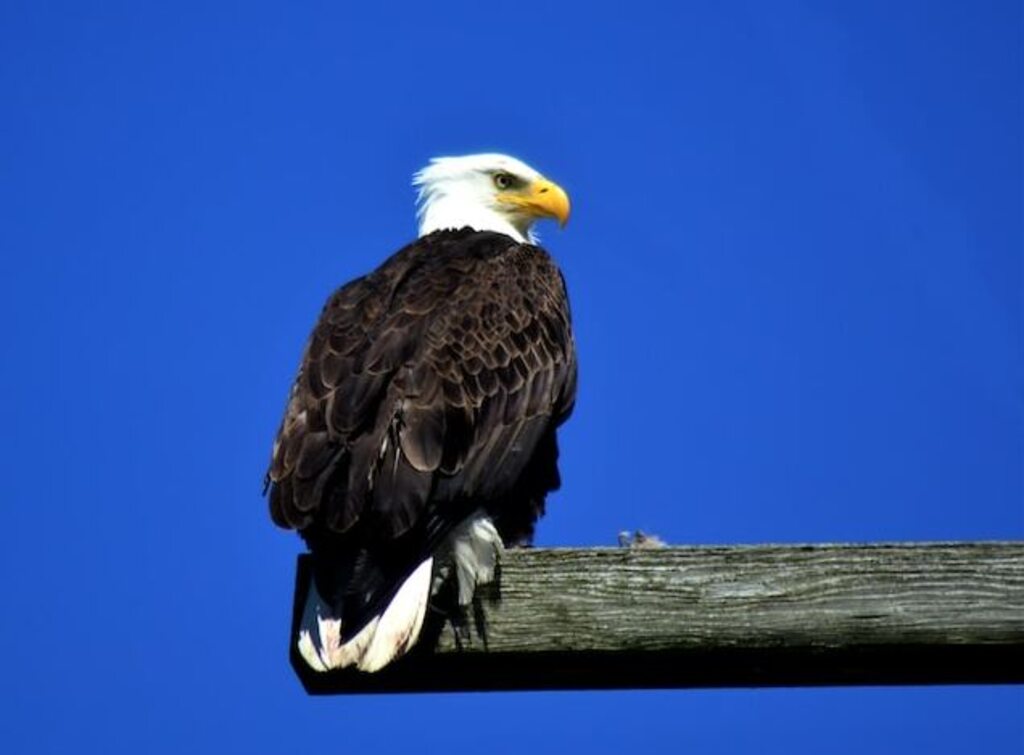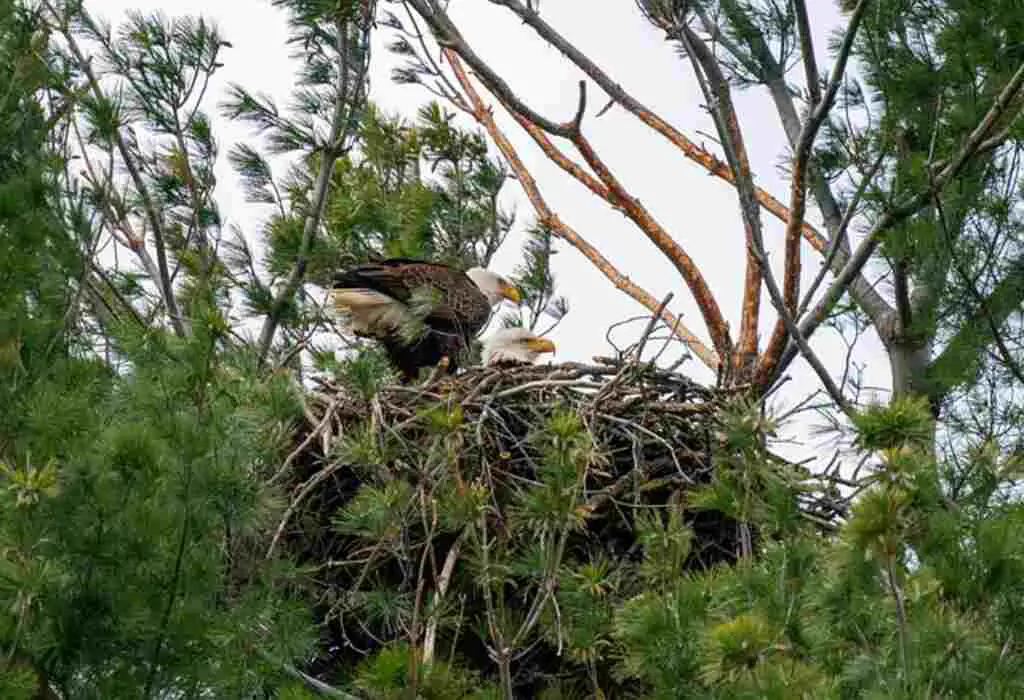“When Do Eagles Mate In The Midwest? Grab your binoculars and put on your detective hats because we’re about to embark on a thrilling eagle romance investigation!
From ‘love nests’ to ‘avian speed dating,’ join us as we uncover the captivating timeline of when these majestic birds find their feathered soulmates in the heart of the Midwest.
Get ready for a bird’s-eye view of eagle love in action!”
Table of Contents
- 1 Key Takeaways
- 2 When Do Eagles Mate In The Midwest?
- 3 Eagle Species in the Midwest
- 4 The Life Cycle of Eagles
- 5 Understanding Eagle Breeding Seasons
- 6 Where to Find Eagles in the Midwest
- 7 Courtship Rituals and Behaviors
- 8 Nesting and Egg-Laying Process
- 9 Hatching and Rearing Eaglets
- 10 Challenges and Threats to Eagle Mating
- 11 Conservation Efforts for Eagles
- 12 The Role of Citizen Science in Eagle Research
- 13 Famous Eagle Mating Events in the Midwest
- 14 Tips for Eagle Watching and Photography
- 15 Conclusion
- 16 Frequently Asked Questions
- 17 Author
Key Takeaways
- Eagles in the Midwest engage in mating rituals during early spring.
- Courtship displays and nest-building activities occur prior to copulation.
- Successful courtship flights lead to the formation of strong pair bonds.
- Female eagles lay one to three eggs, which are incubated for around 35 days.
When Do Eagles Mate In The Midwest?
Eagles in the Midwest typically mate during the winter months, with their breeding season spanning from December to February. This period aligns with their natural instincts for nesting and raising their young.
Observing eagle mating behaviors during this time provides valuable insights into their fascinating life cycle and contributes to our understanding of these majestic birds in their natural habitat.
The Midwest’s unique landscape, coupled with the opportunity to witness eagle mating, adds to the region’s allure, offering an exceptional wildlife experience for enthusiasts and nature lovers alike.
Eagle Species in the Midwest
The Midwest hosts two captivating eagle species—the iconic Bald Eagle, symbolizing strength and freedom, and the stunning Golden Eagle, adding a touch of wilderness and mystery to the region’s landscapes. Witnessing these awe-inspiring birds offers a glimpse into the grandeur of the Midwest’s thriving wildlife.
The Life Cycle of Eagles
The breeding season for eagles in the midwest typically occurs in the early spring, during which they engage in courtship displays and construct elaborate nests for their offspring.
Eagles are known for their impressive migration patterns, with some individuals traveling thousands of miles to reach their breeding grounds.
During courtship, eagles perform intricate aerial displays, showcasing their strength and agility.
Once a pair has formed, they work together to build a large nest made of sturdy branches and lined with soft materials.
Eagles are highly skilled hunters, using their sharp talons and strong beaks to catch fish, small mammals, and occasionally even larger prey.
Understanding eagle breeding seasons is crucial for conservation efforts and managing their populations.
By studying their migration patterns and hunting techniques, researchers can gain valuable insights into their behavior and reproductive success.
Transitioning into the next section, it is important to explore the factors that influence eagle breeding seasons.
Understanding Eagle Breeding Seasons
During the breeding season of eagles in the midwest, their reproductive activities are primarily influenced by environmental factors such as temperature and food availability, ensuring optimal conditions for successful mating and offspring production.
The eagle breeding habits follow a specific pattern, with courtship displays and nest-building activities occurring prior to copulation. The male eagle engages in aerial displays, showcasing its strength and agility, to attract a mate. Once a pair is formed, they engage in mutual nest-building, reinforcing their bond.
The female eagle lays one to three eggs, which are incubated for approximately 35 days. Both parents take turns incubating the eggs and providing food for the growing chicks. After hatching, the chicks are cared for by both parents, who provide them with food and protection until they fledge at around 10-12 weeks of age.
These breeding season factors ensure the survival and growth of the eagle population in the midwest. Transitioning into the subsequent section about ‘where to find eagles in the midwest’, their breeding habits make specific locations conducive for nesting and raising their young.

Where to Find Eagles in the Midwest
Nesting and breeding sites of eagles in the Midwest are strategically located to provide optimal conditions for their reproductive success.
Eagles in the region are known to migrate to their wintering grounds, which are typically in the southern parts of the United States. However, during the breeding season, they return to the Midwest to find suitable nesting sites.
These sites are often situated near bodies of water, such as rivers and lakes, which provide an abundant source of food for the eagles and their offspring. Additionally, these areas offer ample space and protection from predators, ensuring the safety of the eagle nests.
The presence of tall trees with sturdy branches also facilitates the construction of large nests.
This section will now explore the courtship rituals and behaviors of eagles in the Midwest, shedding light on their fascinating reproductive strategies.
Courtship Rituals and Behaviors
Courtship rituals and behaviors of eagles in the Midwest reveal intricate displays of aerial acrobatics and vocalizations as they engage in elaborate courtship flights. These courtship displays serve to strengthen pair bonding and establish territories.
Male eagles perform breathtaking aerial displays, soaring high into the sky and performing daring dives, while vocalizing with loud calls to attract the attention of potential mates. Female eagles respond by mirroring the male’s flight patterns and vocalizations, displaying their agility and strength.
These courtship flights not only demonstrate the eagles’ physical prowess but also allow them to assess each other’s fitness and compatibility. Successful courtship flights lead to the formation of strong pair bonds, which are essential for successful reproduction.
These courtship behaviors are a crucial part of the eagle’s mating process, setting the stage for the subsequent nesting and egg-laying process.
Nesting and Egg-Laying Process
The nesting and egg-laying process of eagles involves the careful selection of an appropriate nesting site, such as a tall tree or cliff ledge, where the female can construct a sturdy nest made of sticks and lined with soft materials like moss or grass.
This nesting behavior is crucial for the survival and well-being of the eggs. Once the nest is built, the female eagle will lay one to three eggs, typically a few days apart.
The eggs are incubated for about 35 to 45 days, with both the male and female taking turns to keep them warm.
During this period, the parents display remarkable dedication and vigilance, ensuring the eggs are protected from predators and harsh weather conditions.
After the incubation period, the eggs will hatch, and the eaglets will begin their journey of hatching and rearing.

Hatching and Rearing Eaglets
Hatching and rearing eaglets involves an intricate process of parental care and provisioning for the young.
Eagles employ various hatching techniques to ensure the successful emergence of their offspring.
The incubation period typically lasts around 35 days, during which both parents take turns to maintain the ideal temperature for the eggs.
Once hatched, the eaglets rely heavily on their parents for food and protection.
Eagles exhibit remarkable parenting strategies, such as regurgitating food to feed their young and building sturdy nests to provide a safe environment.
The parents work together to defend the nest from predators and harsh weather conditions. These remarkable behaviors contribute to the survival and growth of the eaglets.
Transitioning into the subsequent section about challenges and threats to eagle mating, the successful hatching and rearing of eaglets is not without its obstacles.
Challenges and Threats to Eagle Mating
Habitat loss and fragmentation present significant challenges to eagle mating in the Midwest. As human population and development continue to expand, eagle habitats are being destroyed or altered, making it difficult for eagles to find suitable nesting sites.
Additionally, pollution, such as pesticides and heavy metals, can have negative effects on eagle reproduction, including reducing fertility and causing developmental abnormalities in eaglets.
Lastly, human disturbance, such as noise and disturbance from recreational activities, can disrupt eagle courtship and mating behaviors, potentially leading to decreased reproductive success.
These factors highlight the need for conservation efforts to protect and restore eagle habitats and minimize human impacts on their breeding behaviors.
Habitat Loss and Fragmentation
Fragmentation of suitable nesting sites has resulted in a significant decline in available mating opportunities for eagles in the Midwest. This loss of habitat has had several negative impacts on the eagle population in the region.
- Habitat restoration: Efforts to restore suitable nesting sites have been undertaken to address the issue of habitat loss. These initiatives involve creating and maintaining suitable nesting areas, such as tall trees or artificial nesting platforms, to provide eagles with suitable places to mate and raise their young.
- Genetic diversity: Fragmentation of nesting sites can also lead to reduced genetic diversity among eagle populations. When eagles are limited to smaller, isolated areas, they are more likely to mate with close relatives, leading to inbreeding. This can result in decreased fitness and increased vulnerability to diseases and other threats.
- Impact of pollution and human disturbance: In addition to habitat loss and fragmentation, eagles in the Midwest also face challenges from pollution and human disturbance. These factors can disrupt nesting behaviors, interfere with courtship rituals, and negatively impact overall reproductive success.
The impact of pollution and human disturbance on eagle mating will be discussed in the subsequent section.
Impact of Pollution and Human Disturbance
The loss and fragmentation of habitat can have significant impacts on eagle mating patterns in the Midwest. However, another critical factor affecting the reproductive success of these majestic birds is pollution and human disturbance.
Pollution, such as chemical contaminants and toxins, can accumulate in the eagles’ food chain, leading to detrimental effects on their reproductive systems.
Additionally, human disturbance, including noise and disturbance from recreational activities, can disrupt the eagles’ breeding behaviors and cause stress, ultimately affecting their ability to successfully mate.
Understanding the pollution effects and human disturbance impacts on eagle reproduction is crucial for conservation efforts and ensuring the long-term survival of these species.
Conservation strategies aimed at mitigating pollution and minimizing human disturbance can help create suitable breeding environments that support healthy eagle populations.

Conservation Efforts for Eagles
Conservation efforts for eagles in the Midwest encompass various strategies, including the protection and management of nesting sites. These sites are crucial for the successful breeding and rearing of eagle chicks, and measures such as habitat preservation, nest monitoring, and predator control are implemented to ensure their safety.
Additionally, education and awareness programs play a vital role in fostering public understanding and support for eagle conservation. These programs aim to educate communities about the importance of eagles, their habitat needs, and the actions individuals can take to help protect these majestic birds.
Protection and Management of Nesting Sites
Protection and management of nesting sites is crucial for ensuring the successful reproduction and survival of eagles in the Midwest, evoking a sense of urgency and responsibility in the audience.
To protect eagles and enhance their nesting success rates, several strategies have been implemented. First, the establishment of protected areas, such as national parks and wildlife refuges, ensures that nesting sites are free from human disturbance and potential threats.
Additionally, habitat restoration efforts focus on creating suitable nesting conditions by preserving or enhancing the availability of suitable trees and prey species.
Regular monitoring of nesting sites is also conducted to identify potential threats, such as poaching or habitat degradation.
By implementing these protection strategies, conservationists aim to safeguard eagle nests and promote successful reproduction.
This highlights the importance of education and awareness programs in fostering a culture of conservation and ensuring the continued survival of these majestic birds.
Education and Awareness Programs
Protection and management of nesting sites are crucial for the successful breeding and survival of eagles. However, these efforts alone are not enough to ensure the long-term conservation of these magnificent birds.
Education and awareness programs play a vital role in engaging the public and fostering a sense of responsibility towards eagle conservation.
These programs aim to educate individuals about the importance of protecting eagle habitats, the potential threats they face, and the actions that can be taken to mitigate these threats.
By raising awareness and promoting understanding, education programs create a foundation for conservation initiatives.
They empower individuals to become actively involved in eagle conservation efforts, whether through volunteering, supporting research projects, or advocating for policies that protect these majestic birds.
These programs are instrumental in inspiring a sense of stewardship and fostering a society that values and protects our natural heritage.
Transitioning into the subsequent section about ‘the role of citizen science in eagle research’…
The Role of Citizen Science in Eagle Research
Citizen science plays a crucial role in advancing eagle research in the Midwest by facilitating data collection and analysis. With citizen science participation, researchers are able to gather vast amounts of data on eagle behavior and breeding patterns.
Volunteers are trained to observe eagles in their natural habitats and record information such as nest locations, breeding behaviors, and fledgling success rates.
These data collection methods provide valuable insights into the population dynamics and reproductive success of eagles in the Midwest.
By involving the public in scientific research, citizen science also helps raise awareness about the importance of eagle conservation and fosters a sense of ownership and responsibility among local communities.
This collective effort contributes to a better understanding of eagle mating events in the Midwest, shedding light on their behavior and ecological significance.
Famous Eagle Mating Events in the Midwest
Notable breeding occurrences in the Midwest have captivated researchers and enthusiasts alike, leaving them to ponder the intricate dynamics of these majestic birds’ courtship rituals.
Famous eagle mating events in the region have provided valuable insights into the courtship rituals and behaviors of eagles.
These events often involve elaborate displays of aerial acrobatics, with the male and female eagles engaging in breathtaking mid-air courtship flights.
The male eagle will perform impressive dives and twists, showcasing its strength and agility. The female eagle will respond by performing graceful maneuvers, demonstrating her suitability as a mate.
These courtship rituals are not only visually stunning, but also serve as a way for the eagles to establish and strengthen their bond before breeding.
Understanding these behaviors can provide valuable information for researchers and enthusiasts interested in eagle conservation and management.
Transitioning into the subsequent section about ‘tips for eagle watching and photography,’ it is important to remember that observing these courtship events requires patience, respect for the eagles’ natural habitat, and adherence to ethical guidelines.
Tips for Eagle Watching and Photography
To enhance your experience of observing and capturing the beauty of eagle courtship rituals, it is essential to employ effective strategies for eagle watching and photography.
Eagle watching techniques involve finding suitable locations where eagles are known to gather, such as near bodies of water or in areas with tall trees for perching.
Patience is key, as eagles can be elusive and may require hours of observation to witness their behavior.
Binoculars or a telephoto lens are essential tools for capturing eagle behavior from a distance. It is important to maintain a respectful distance to avoid disturbing the eagles and their natural behavior.
When photographing eagles, it is important to use a fast shutter speed to freeze their movements and capture their impressive flight and hunting skills.
Additionally, understanding their behavior and anticipating their actions can lead to more successful photographs.
Conclusion
In conclusion, eagles in the Midwest engage in mating during the winter months, from December to February. This time frame corresponds to their breeding season, when they establish nests and raise their young.
Observing eagles during this period can provide valuable insights into their natural behaviors and contribute to our understanding of these majestic birds in their natural habitat.
As the Midwest’s landscape transforms with the changing seasons, the opportunity to witness eagle mating adds to the region’s allure and offers an exceptional wildlife experience for enthusiasts and nature lovers alike.

Frequently Asked Questions
What is the average lifespan of an eagle in the Midwest?
The average lifespan of an eagle in the Midwest is influenced by factors such as eagle migration patterns and population dynamics. These factors play a crucial role in determining the longevity of eagles in the region.
Do eagles mate for life?
Eagles engage in complex courtship rituals to attract a mate. These rituals involve aerial displays and impressive feats of strength, symbolizing the importance of commitment and dedication in eagle mating habits.
How many eggs do eagles typically lay in a clutch?
Eagles typically lay 1-3 eggs in a clutch during their breeding season. Eagle nesting habits and breeding behavior involve selecting a suitable nest site, building or repairing the nest, and incubating the eggs until they hatch.
What is the incubation period for eagle eggs?
The incubation period for eagle eggs can be described as a remarkable orchestration of nature, lasting approximately 35-40 days. This critical time period greatly influences hatching success and plays a vital role in the eagles’ reproductive success.
Are there any specific threats to eagle mating in the Midwest?
The impact of climate change on eagle mating patterns in the Midwest and human activities can have significant negative effects on eagle breeding success in the region. These threats should be carefully monitored and addressed to ensure the preservation of eagle populations.





